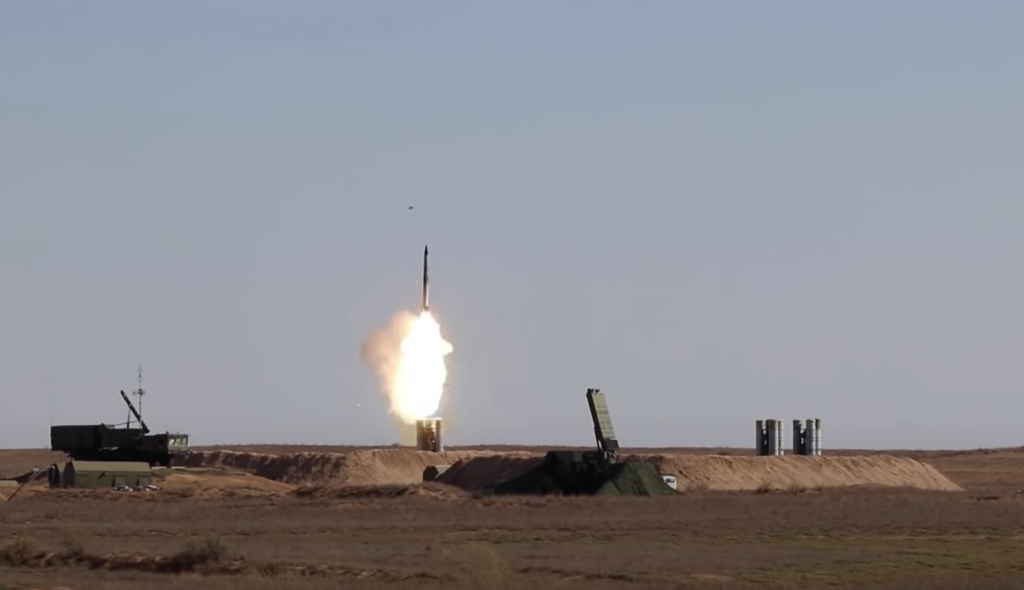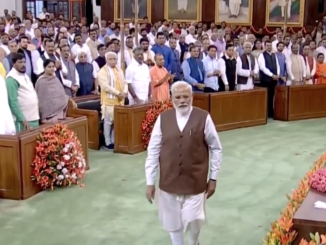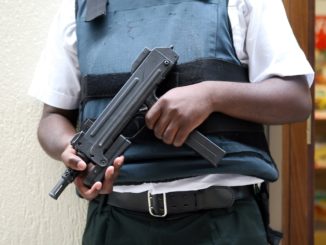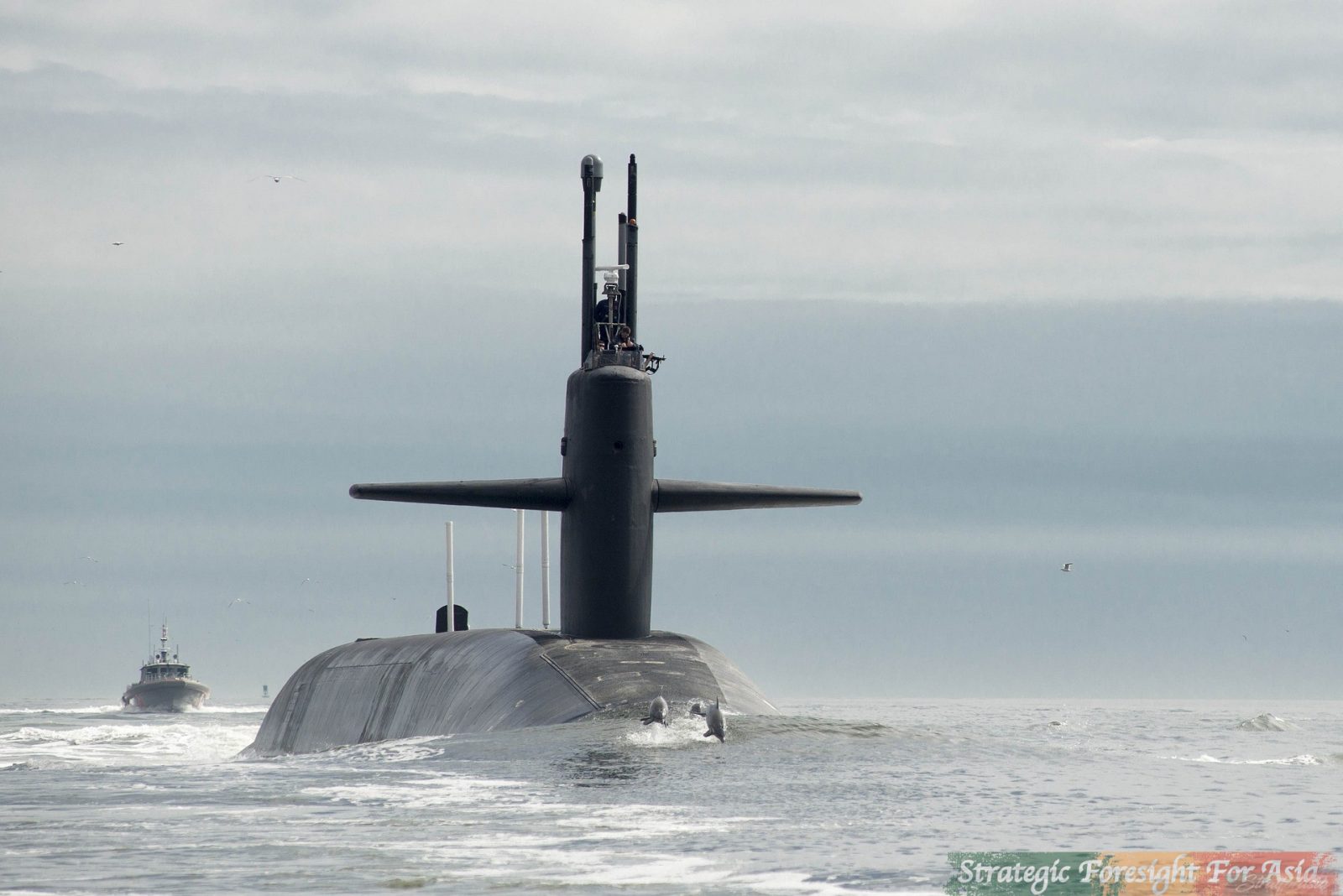
According to media reports, India began deployment of the first battery of the S-400 aerial defence system acquired from Russia towards the end of December 2021 in Punjab, most likely in Jalandar, close to the Pakistani border. Given the boastful claims of Indian officials and media, an objective assessment is necessary to evaluate the Indian hype and evacuate the real impact on regional strategic stability, especially the credibility of deterrence between Pakistan and India.
The S-400 is a mobile radar integrated air defence system that provides anti-access/area denial (A2/AD) capability against aircraft, unmanned aerial vehicles, cruise missiles, ballistic missiles and Airborne Early Warning (AWACs) platforms. Each system consists of two units, each with a Command and Control capability consisting of two radars – one for surveillance and the other for targeting; while four transporter- erector launcher trucks hold four missiles – of short (40 km), medium (120 km), intermediate (250 km) and long (400 km) ranges. The surveillance radar tracks incoming hostile aerial vehicles and feeds the data to the targeting radar to lock- in the target and fire one or more of its missiles as required.
According to an article in the Economist Magazine in 2017, the S-400 was evaluated as one of the best aerial defence systems available at the time. The Stockholm International Peace Research Institute (SIPRI) also highly rated the system.
The Indians have acquired 5 batteries of the S-400 system at a cost of nearly 5 billion dollars, initially negotiated with Russia in 2015 and formally concluded in 2018. Training for Indian Air Force personnel began over a year ago and the first batch was deployed last month in Punjab. According to Indian officials and defence analysts, deployment of all 5 systems would be completed by end 2022 to defend Indian cities like New Delhi and Mumbai as well as major strategic assets. The S-400 batteries will be part of India’s elaborate Ballistic Missile Defence (BMD) system, involving the Prithvi Aerial Defence (PAD) for high attitude defence together with the Advanced Aerial Defence (AAD) system for lower attitude defence, which would constitute the outermost layer. The S-400s would provide the second layer. In addition, the Israeli supplied Barak-8 missiles will form the third layer while the Aakash area defence will provide the fourth layer. Yet another innermost fifth layer would be formed by the National Advanced Surface to Air Missile System (NASAMS-II). According to Indian sources the S-400 will be the “cornerstone’’ of India’s BMD capability.
Acquisition and deployment of the S-400 has been described by Indian officials and defence analysts as a “game changer” and “force multiplier”. Some Indian Air Force sources have claimed that the S-400 provides India the capability to intercept Pakistani Air Force aircraft within Pakistani airspace and thereby neutralize Pakistan’s ability to launch air attacks against Indian targets. Others have gone further to assert that with the full deployment of the S-400 systems, India’s BMD capability would become “impregnable’’, even enabling India to launch a preemptive first strike against Pakistan, aimed at neutralizing its nuclear arsenal and delivery capabilities.
However, such Indian claims are highly exaggerated and unrealistic. Even some Indian experts, including former Indian Air Force officials, have described the S-400 as “junk” and the claims of invulnerability as deeply flawed. Western defence observers have also raised serious doubts about the efficacy of the S-400 as indeed of any BMD system. The fact is that no BMD system, even the most advanced defence shields possessed by the US and Russia, can be considered as being hundred percent effective. This is because there are various means by which any aerial defence system, including the S-400 can be penetrated. This can be done by low flying super-sonic aircraft, terrain hugging maneuverable cruise missiles, UAVs, hypersonic missiles, stealth aircraft, and MIRVs (Multiple Independently Targeted Reentry Vehicles). Use of swarms of drones, decoys and electronic jamming can also overwhelm the most sophisticated and comprehensive BMD systems. Moreover, the range covered by the S-400 can also be reduced by the terrain, such as mountainous regions, to no more than 40 kilometers. Then there is the problem posed by limited number of targets and assets that can be protected. Even the most wide-spread defence shield cannot provide effective defence against attack for all vital targets.
The vulnerability of such aerial defence systems was demonstrated most recently in the Azerbaijan-Armenia conflict in Nagorno-Karabakh where Azeri drones overwhelmed Russian supplied air defences of Armenia. Similarly, Israeli aircraft have been able to repeatedly penetrate the Russian origin air defence system in Syria.
An additional problem for India would be inter-operability between its own indigenous defence systems, those of Israeli origin and the Russian S-400 systems. Operating a complex multi-layered BMD capability with all these diverse systems would prove to be an impossible task for India to ensure effective defence.
But, quite apart from the technical issues of capability and effectiveness, the gravest danger is that the S-400 systems integrated with India’s overall BMD capabilities can encourage a false sense of invulnerability and thereby promote greater risk taking. This is especially true of the current Hindu fascist belligerent Indian government of Prime Minister Modi which has already demonstrated irresponsible behavior by its clashes with Pakistan in February 2019 and with China in June 2020. In such circumstances, there is bound to be a detrimental impact on the credibility of deterrence and regional strategic stability.
Fortunately, Pakistan has anticipated such a scenario ever since India declared its initiation to acquire a BMD capability in its (draft) nuclear doctrine of 1999 and rejected Pakistan’s proposal for a Strategic Restraint Regime which, among other measures, called for both countries to renounce acquisition of BMD capabilities owing to their destabilizing impact. As a result, Pakistan decided, that while it would not to incur wasteful expenditure on unreliable BMD assets, it would focus its resources on developing the cost-effective option to penetrate the Indian BMD.
These include high performance aircraft of the PAF such as the F-16s, the JF-17 series and the recently acquired J-10C fighters, besides the possibility of Pakistan opting for FC-31 Stealth aircraft from China in the future. In addition, Pakistan has developed the terrain hugging maneuverable air, land and sea based Babar cruise missiles and the air launched Raad cruise missile, apart from the Ababeel MIRVed missiles which are all designed to penetrate the Indian BMD. Besides, Pakistan has wide array of short, medium and long range ballistic missiles such as the Nasr, Ghaznavi, Abdaali and Shaheen, which provide a triad of nuclear delivery capabilities. Also in Pakistan’s arsenal are armed drones, UAVs and electronic jamming capabilities. The net result is that India’s BMD system, despite inclusion of the S-400, remains highly vulnerable and unreliable.
Consequently, the induction of the S-400 systems is hardly a game changer or a force multiplier – a myth promoted by the Indians. The only danger is that it can give a false sense of security and encourage bravado by a belligerent and irresponsible Indian leadership. This would undermine deterrence and strategic stability. Still, as professionals, the Indian defence services are not ignorant about the serious limitations of their BMD capability. Nevertheless, for the sake of credible deterrence, Pakistan needs to continue enhancing its anti-ballistic missile capability and remove any room for another Indian misadventure.
![]()




Be the first to comment